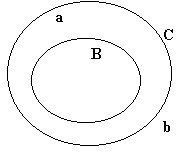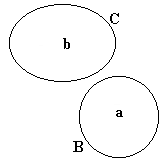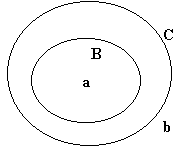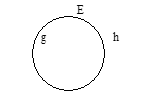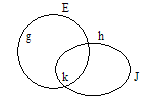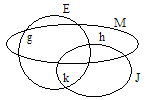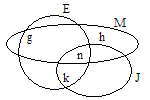First, if there are any bears at all in this world, they are inside the "B" circle. If there are any cats at all, they are inside the "C" circle.
Second, because the "a" is inside the "B" circle but not the "C" circle, it means that King Arthur is a bear and not a cat.
Finally, because the "b" is inside both circles, it means that Bill Clinton is both a bear and a cat.
